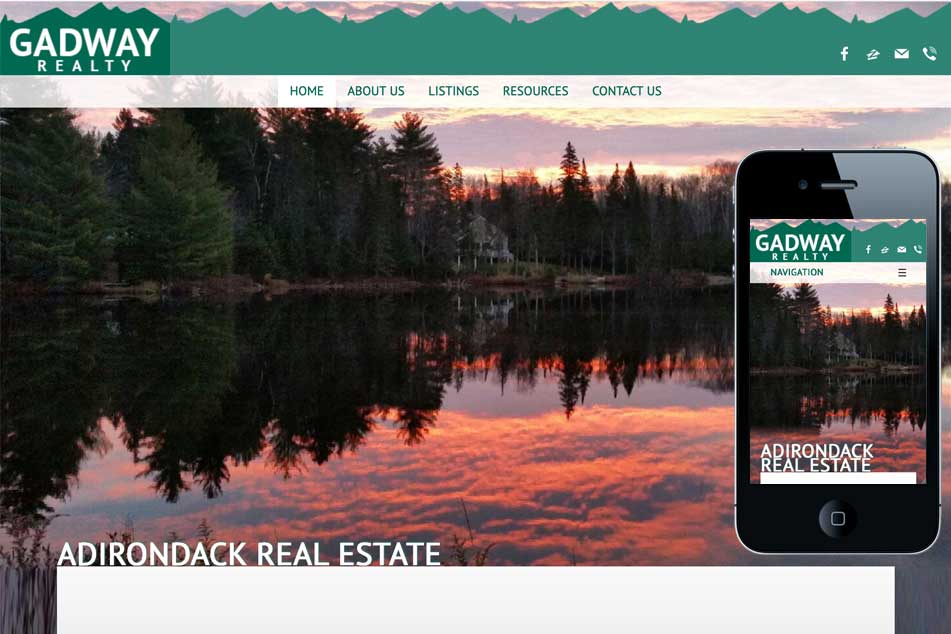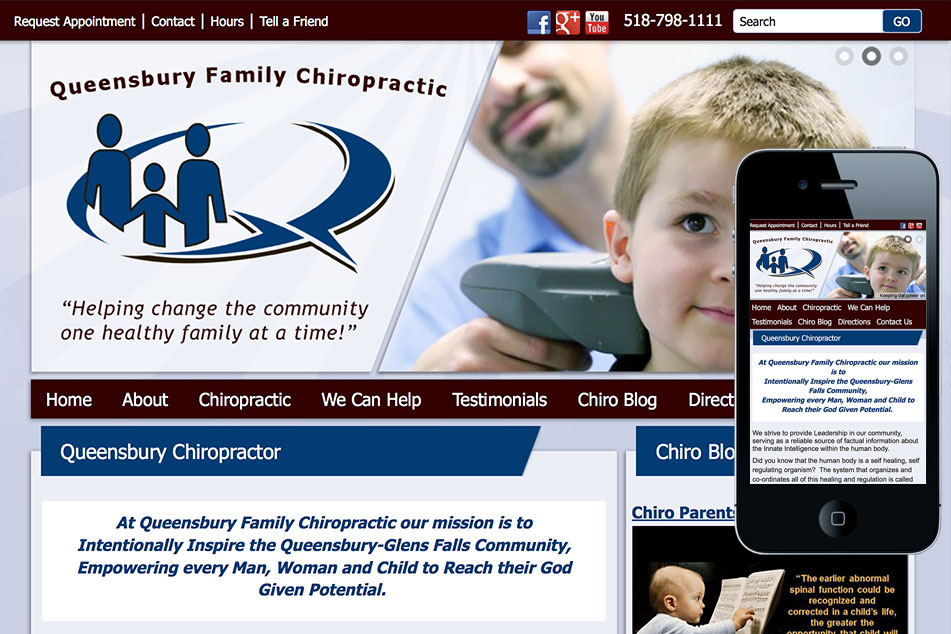A Well Designed Web Site Aids In Branding A Company And Draws Customers To Its Services
There's nothing more frustrating on a Web site than not being able to find or get to what you're looking for. Chances are, that frustration will lead you to abandon the site and never return.
A well-designed Web site can draw customers to your business, and, just as important, keep them coming back. While every Web site design and purpose are unique, there are some universal truths to what makes one successful.
First, a Web site should be designed with the end user in mind. Knowing who the target audience is, plus what tools they utilize, is very important when designing a Web site.
"It all depends on the end user, the end market," stated Nathan Olson, owner of Nolee-0 Web Design (www.Noleeo.com) in Lake George. "Who's going to be using the site? If it's an older crowd, use more text and more information. If you're talking about a musician, maybe it's more flashy, with lots of audio."
The site should represent the company, or individual, hut also be geared towards a specific market.
"As a designer," Olson explained, "I spend half-an-hour or more just talking to [the client]. I design from their personality, or the corporation's image."
A second important trait towards the success of a Web site is the site's navigation system. Visitors will leave the site and not return if they can't navigate it. It shouldn't be a maze that the user has to figure out. One bad navigational experience often means this user is lost to the site for good.
"I like to have what's called bread crumbs," Olson explained. "Especially on large sites, where there is more than one level [ an "About Us" page, for example, may have five sub- pages, or levels], you should be able to click back. It's like following bread crumbs back to the home page."
There is an old rule of thumb stating that users should be able to get to what they are looking for within three "clicks."
The site map is also important for search engine optimization (SEO), which refers to getting ranked in search engines such as Google and Bing. A Web designer can pull reports of what keywords people are putting in to reach your site and sites similar to yours.
Olson discusses a site map with each new client, meaning "what pages they want to be included. There should be a Home page, an About Us page. There should always be a contact form on a Contact page. People on certain email hosts can't click on 'email' and get to you, so you should always have an address listed."
Olson stated "I'm an advocate of your address and phone number being on every page of the site."
The usability is an important trait. The design needs to be clear and concise in addition to being easily navigated.
Another important aspect that leads to a successful site concerns the content. "A lot of people make the mistake of too much text." Olson said. "It's important for search engines, but paragraph after paragraph of text is too overwhelming for some people. Splitting your web site up into lots of little pages is not a bad thing. It is more of a marketing thing – you need a good tag line, good photos."
There is an art to writing good content for a Web site. If there is no one at the company able to do this, the Web designer can help. Turning to a professional to write the content is money well spent.
A great design without strong content is a typical site error. There are a few other mistakes businesses make when creating a Web site. While you may have a fantastic web site, believing that just because you've built a web site, visitors will come, is incorrect.
There needs to be someone who knows how to market the site, especially in terms of search engine. A full online marketing strategy is essential in bringing users to the Web site, and to keeping them returning.
There also needs to be someone who will manage the Web site, whether it is someone trained within the company, or a hired professional. This helps maintain a professional appearance.
Another mistake is including too many bells and whistles, or not using the ones you've added correctly. Don't put up roadblocks that will slow down the user; extras should only serve to enhance the purpose of the site.
In terms of a Web site, "sticky" is an insider's term referring to a site's ability to keep visitors and encourage them to return. A site's stickiness may not depend on the main content, but on an adjunct aspect, such as video, flash animation, or a blog.
"People have news blips, and upcoming events," Olson said. "If you have that, you have to be pretty good at keeping it up. If you're not going to keep up on it, don't do it. If you have a blog and don't update it for six months, it's not worth it."
Blogs, polls and surveys are useful ways to interact with the user. They allow the company to get insight from their target market, and the user feels like they are adding value.
If a blog is maintained and updated frequently, users will return to view the fresh content. However, don't update content on your site – such as on your Home page – if it's working. Keep in mind that the text as is may be helping you with search engine probes.
People use the Web in different ways. Some are on all day, for example; some join clubs, or search for purchases and discounts; some are merely spectators; and others are social networkers. It's imperative to study these ways to ensure repeat users to the site, and a good Web designer will know how to tackle this.
New trends in Web sites include the social media sites, such as Twitter. However, you need to use these media sites properly.
"People need to start thinking of having short video clips introducing the page, and the company," Olson stated. "Clips should reinforce the text that is on the page. Or just use audio, not necessarily video."
Again, this interaction is important to both the company and the user. If the user gets a feeling of being involved in the site, he or she will share it with friends. This is the best kind of marketing.
That is, after all, the purpose of a Web site. It is an invaluable marketing tool, but only when done properly.
After all, a brochure may be seen by a few people, but a good Web site is seen by everyone.
By: Wendy Page
Glens Falls Business Journal
 Nate recently designed a web page for my business, I could not be more pleased, he listened to all my needs and really paid attention to the details, incorporating many of his ideas. I could not be happier with the finished product.
Nate recently designed a web page for my business, I could not be more pleased, he listened to all my needs and really paid attention to the details, incorporating many of his ideas. I could not be happier with the finished product. I was just on our webpage and I thought you should know that as I was looking through it, I thought "Man, I really LOVE our webpage!" I've been on a lot of other chiro's pages lately looking to make referral for various people and sometimes I'm completely shocked at how shabby their web presence is! We're really blessed to have such a beautiful page. I scheduled a new patient today, he Googled "Chiropractor" and looked around. He said he chose us because of our testimonials and he had already printed out the New Patient Intake forms. It's just a really great page :-)
I was just on our webpage and I thought you should know that as I was looking through it, I thought "Man, I really LOVE our webpage!" I've been on a lot of other chiro's pages lately looking to make referral for various people and sometimes I'm completely shocked at how shabby their web presence is! We're really blessed to have such a beautiful page. I scheduled a new patient today, he Googled "Chiropractor" and looked around. He said he chose us because of our testimonials and he had already printed out the New Patient Intake forms. It's just a really great page :-)  "I was thinking about you and just wanted to say, we are so pleased with the website. Hits are coming in and we are getting the jobs. We have not finished with the site, we plan on continuing working with you, so you will be hearing from us in the future. And again, thank you, thank you, for everything you have done for us so far, and contibuting to C&C Seamless success!
"I was thinking about you and just wanted to say, we are so pleased with the website. Hits are coming in and we are getting the jobs. We have not finished with the site, we plan on continuing working with you, so you will be hearing from us in the future. And again, thank you, thank you, for everything you have done for us so far, and contibuting to C&C Seamless success!